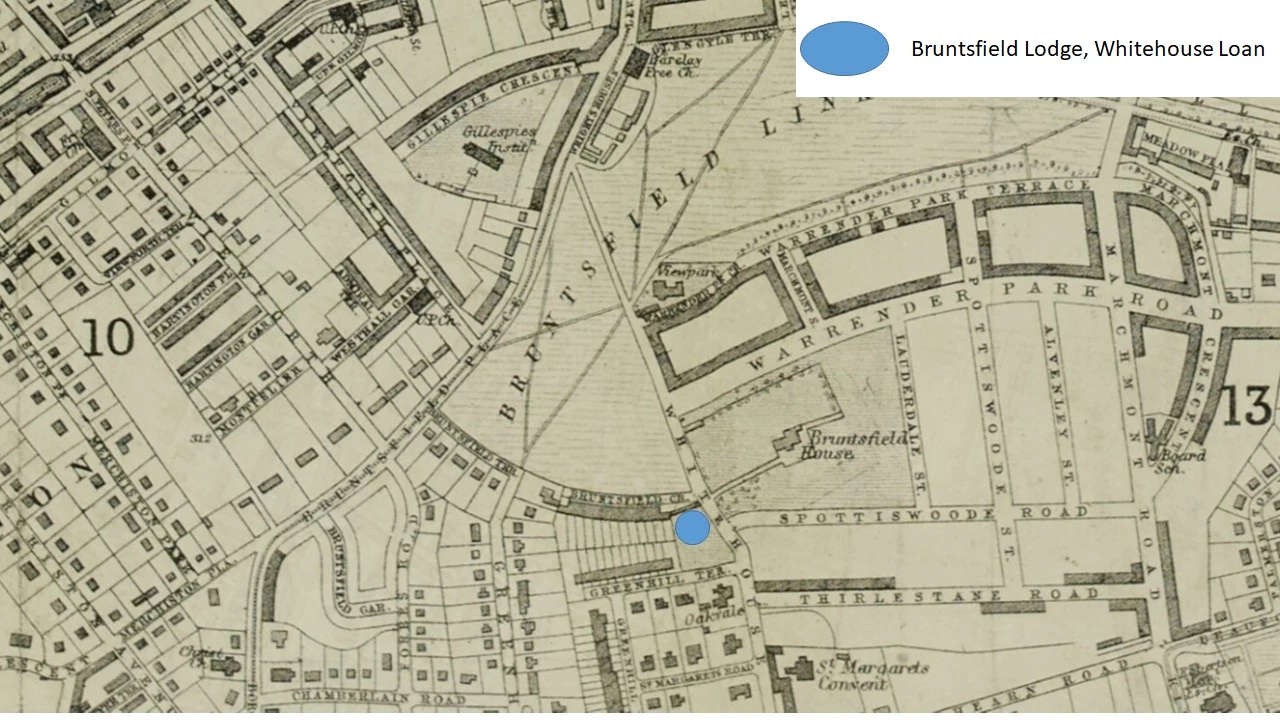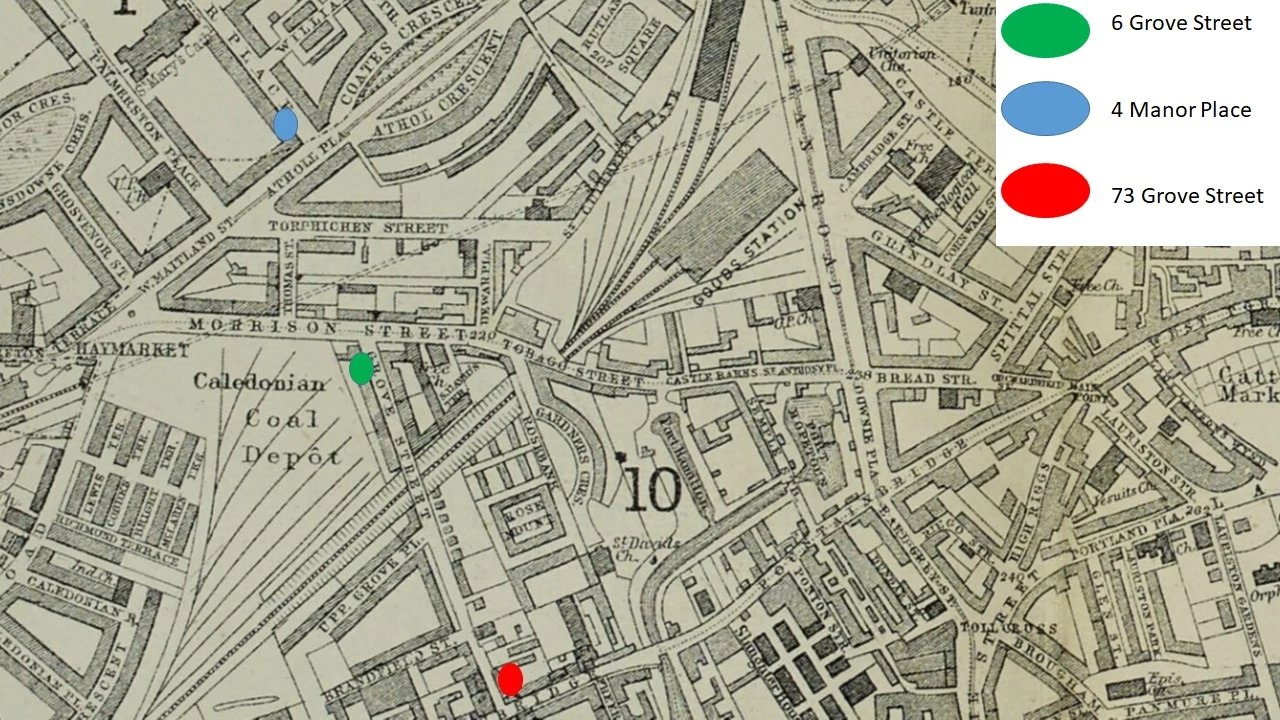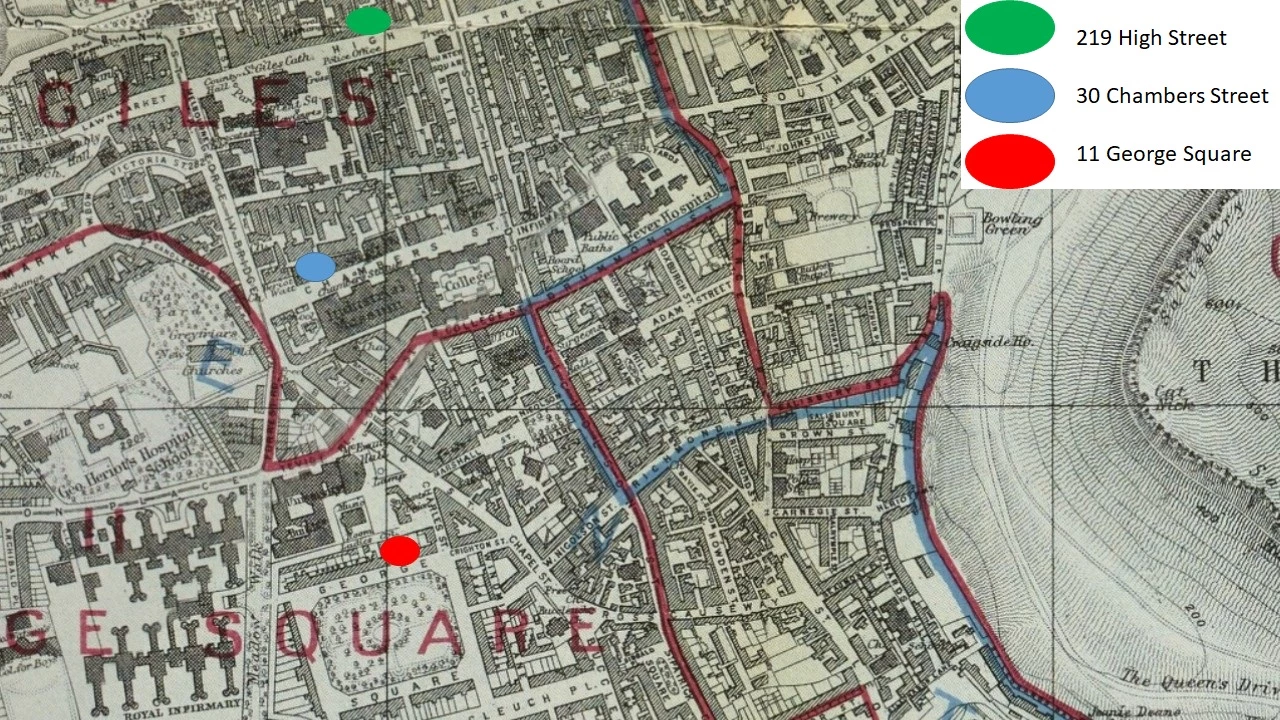A day in the life of a medical student: what was it like in 1869?
Edinburgh medical school and the healthcare services within Edinburgh have evolved significantly since the late 19th century. Teaching was concentrated around the Old Town and hospitals were smaller and more numerous than the Royal Infirmary and Western General hospitals. With the use of maps, this blog post will explore the important locations of the Edinburgh Seven during and after their studies. Some locations related to Elsie Inglis’ career are also discussed since she played such a vital role in the education of women doctors in Edinburgh.
Medical Students in 1869: Where did they Study?
The Edinburgh Seven all lived in 15 Buccleuch Place, which is now the University of Edinburgh’s Student Experience Office. In our research we did not encounter any mentions of the Edinburgh Seven studying in public spaces to prepare for the entrance exam. That was understandable considering the women were unwelcomed by a large proportion of the male student population.
Once they were accepted to attend classes, the Edinburgh Seven started using the medical school buildings. In her diary, Sophia Jex-Blake describes attending a class about “bones and surgery” at Surgeon’s Hall on Nicholson Street. Surgeon’s Hall is also the place of the famous riot against the Edinburgh Seven and is now a museum owned by the Royal College of Surgeons of Edinburgh. From 1872, the Royal Infirmary, located on Drummond Street and linked to the High School Yards, accepted women for clinical teaching in one ward for just three hours a week, putting them at a great disadvantage compared to their male counterparts.
In his book Leaves from the life of A Country Doctor, Dr Clement Bryce Gunn describes his struggle as a young medical student living in Stockbridge when bikes and buses did not exist. Luckily for the Edinburgh Seven, they lived very close to all the teaching facilities.

Life After Medical School
Sophia Jex-Blake became the third female doctor in the UK when she registered with the General Medical Council in 1877. She opened her first practice in 4 Manor Place in 1878. On September of that same year, she opened the Edinburgh Provident Dispensary for Women and Children at 73 Grove Street, Fountainbridge. In 1885, it expanded, providing 6 beds and becoming the Edinburgh Hospital and Dispensary for Women and Children at 6 Grove Street. This facility was built for women requiring hospital treatment and was the first hospital entirely staffed by women.

From 1883 to 1899, Sophia Jex-Blake lived and practised in the Bruntsfield Lodge on Whitehouse Loan. When she retired and left Edinburgh, the Executive Committee of the Hospital acquired her home. At the time, the Lodge provided 18 beds as a small general hospital for women. The hospital capacity was gradually increased to and peaked at 72 beds, before it was sadly closed and redeveloped into houses in 1899.

Medical Schools for Women in Edinburgh:
In 1886, Sophia Jex-Blake decided to create the Edinburgh School of Medicine for Women. The aim was to facilitate the education of women at a time when the Royal Infirmary and University were still resistant to accept women. Sophia Jex-Blake arranged for the students to have clinical teaching at Leith Hospital. Her school successfully educated over 80 women from the UK and other countries. However, in 1890, after a legal imbroglio involving two students who breached the school rules, Sophia Jex-Blake lost a court case. The bad publicity around the court case and Jex-Blake’s uncompromising approach to discipline led to a significant loss of support and students moving away to study in other schools. One of them was Elsie Inglis, who decided, with the help of her father, to set up an alternative school nearby called the Edinburgh College of Medicine for Women in 1889. The college was located on 30 Chambers Street, which was the former Edinburgh Dental Hospital.
Elsie Inglis, in partnership with the Medical Women’s Club, opened a seven bed hospital known as the George Square Nursing Home at 11 George Square in November 1899. This aimed to help poor women during pregnancy and confinement and was a useful midwifery resource and training centre. In 1904, the Home moved to 219 High Street and was renamed the Hospice.

What is left from the pioneers of women’s education?
Edinburgh was a hub for the education of women in medicine in the UK at the time. Even though Sophia Jex-Blake and Elsie Inglis had to battle very hard for their rights, they still managed to have an impressive impact on Edinburgh women’s access to healthcare. The Edinburgh Medical School renamed a room after Elsie Inglis in the Chancellors Building and a plaque commemorates Sophia Jex-Blake and the Edinburgh Seven at the entrance of the Old Medical School. With only three buildings renamed after women at The University of Edinburgh, we hope to see more buildings renamed after female doctors, scientists and intellectuals in the near future.
References:
http://www.lhsa.lib.ed.ac.uk/exhibits/hosp_hist/elsie.htm
https://web.archive.org/web/20060512075147/http://www.lhsa.lib.ed.ac.uk/histheal/hospital/brunt.html
https://web.archive.org/web/20040819205619/http://www.lhsa.lib.ed.ac.uk/catalog/pdfs/LHB8.PDF
https://en.wikipedia.org/wiki/Bruntsfield_Hospital
http://www.lhsa.lib.ed.ac.uk/exhibits/hosp_hist/city.htm
https://historic-hospitals.com/gazetteer/edinburgh/
All the maps are linked to an URL and are reproduced by permission of the National Library of Scotland.
Author: Loïc Hayois




Think the closure date of Bruntsfield Hospital is incorrect and should be 1989 rather than 1899.
Indeed, thank you. Corrected! (some time back).